In today’s competitive business landscape, businesses must leverage data-driven insights to make informed decisions and stay ahead of the curve. This is where business analysis tools and techniques come in. These tools and services enable companies to analyze data, identify trends, and make informed decisions. It helps in driving growth and profitability. The correct products & services for your business can be tough to choose due to the many possibilities available.
But by understanding the most popular options, you can make informed decisions to help your business thrive in 2023 and beyond. One option for businesses is to hire business analysis service. These services provide expert analysis and strategic insights to help businesses make better decisions. In this blog, we’ll explore the seven most popular business analysis tools and techniques you can use in 2023 whether you hire business analysis service or use these tools in-house.
What is Business Analytics?
Business analytics is the process of using data analysis & statistical methods to gain insights into business performance and drive decision-making. It entails gathering & analyzing data from an array of databases, including financial accounts, customer databases, and market research reports. Moreover, it helps businesses to identify patterns & trends, understand customer behavior, and gain a competitive advantage. Similar to our business analysis services, we offer in-depth analysis and strategic insights frequently used to support data interpretation and the creation of practical strategies.
How do business analytics tools make your business smooth & better?
Business analytics tools and services can make your business smooth and better by enabling you to make data-driven decisions. These tools provide valuable insights into customer behavior, market trends, and business operations, allowing you to optimize processes and stay competitive. Additionally, you can hire business analysts who can provide expert analysis and strategic insights to help you make better decisions and drive growth.
7 Most Popular Business Analysis Tools & Techniques
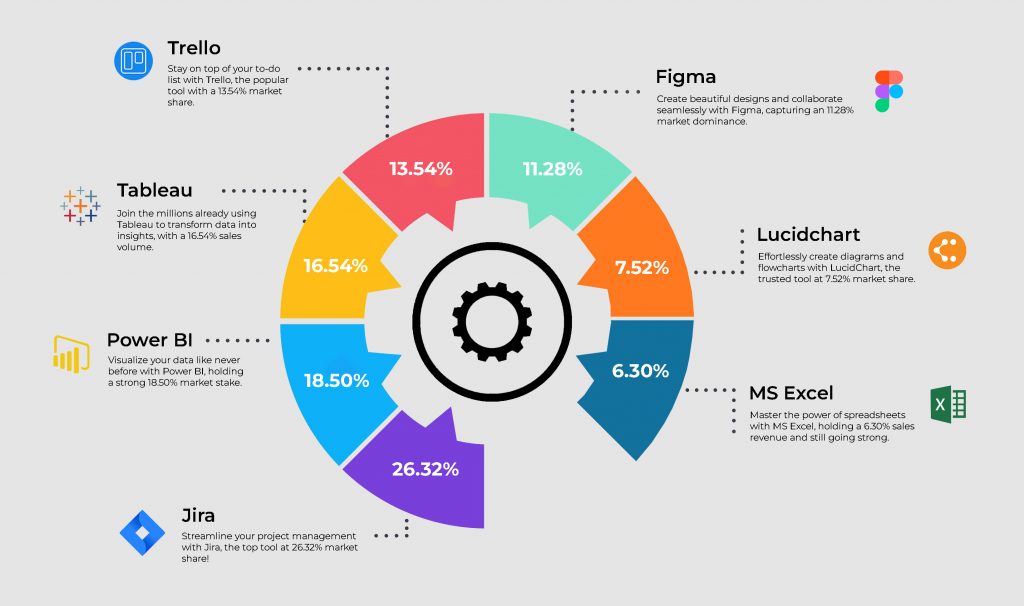
Tool 1: Jira
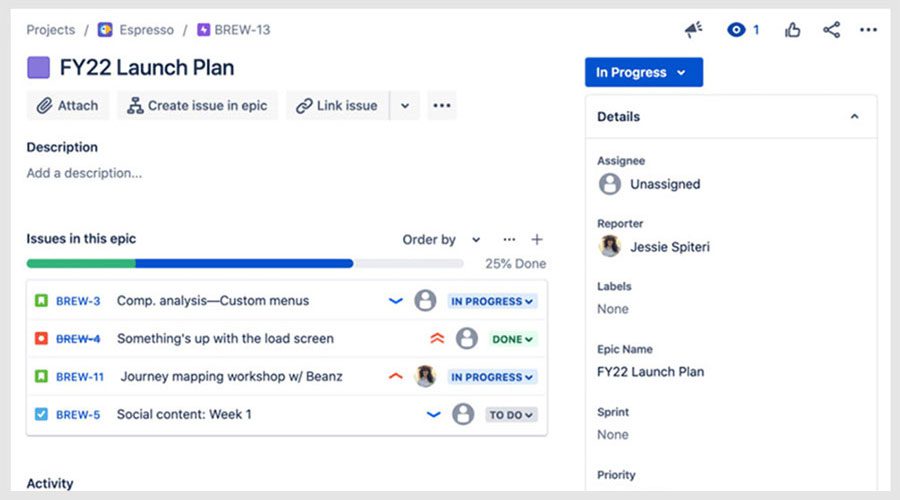
Jira is a popular project management tool often used in software development & IT teams but can be adapted for various business contexts. It is a versatile tool & covers 26.32% market share that provides a range of features, such as project planning, task tracking, and team collaboration. As a business analysis tool, Jira can track progress and performance metrics and generate reports that provide insights into team productivity and project outcomes.
Moreover, Jira can be beneficial when used in conjunction with business analysis services, which can provide expert analysis and strategic insights to help businesses make better decisions. Thus, you can use Jira to track project status, identify improvement areas, and generate reports that provide valuable data for decision-making.
Tool 2: Trello

Trello is one of the most popular business analysis tools that provide teams with a simple visual interface for task organization and prioritization. While originally designed for use in software development teams, Trello has since expanded to various business contexts, making it a versatile business analysis tool.
Trello’s card-based system allows teams to track progress, assign tasks, and collaborate in real-time. When used in conjunction with business analysis services, it can be a powerful tool for tracking progress toward business goals & identifying areas for improvement. Overall, Trello is a flexible & intuitive business analysis tool that can help teams to improve workflows & optimize performance.
Tool 3: Power BI
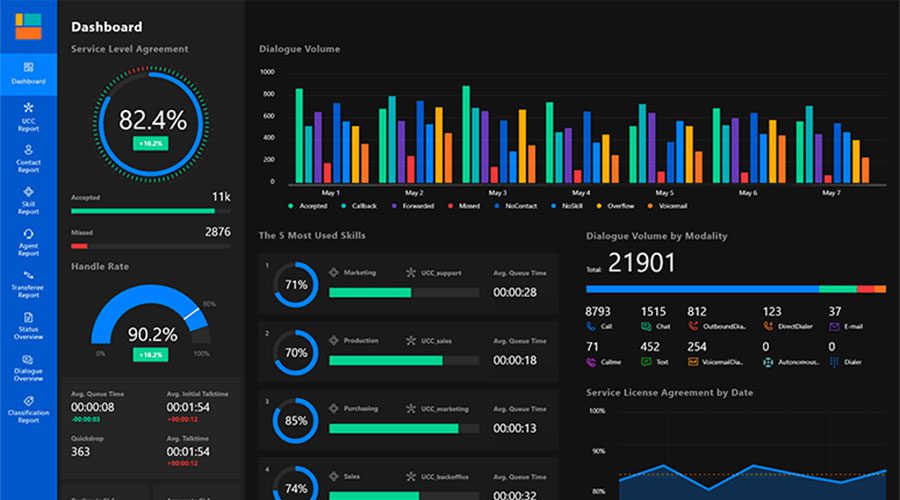
Power BI is a powerful business analytics tool from Microsoft that helps businesses to visualize and analyze data from multiple sources. It allows users to create interactive reports and dashboards with easy-to-use drag-and-drop features and provides a range of data visualizations to help users gain insights into their data. With its ability to integrate with other Microsoft products such as Excel, SharePoint, and Dynamics 365, Power BI is a popular choice for businesses looking to streamline their data analysis processes and gain a competitive edge. Moreover, it holds a strong 18.50% market stake.
Tool 4: Tableau

Tableau is one of the widely used business analysis tools in the business intelligence industry with 16.54% sales volume. Users of Tableau can view and comprehend data due to its integrated visual platform. It’s a popular option among businesses due to its effectiveness & scalability. It stands apart from the competition because of distinctive features like Einstein Discovery AI.
Allowing you to choose between using its IT resources or your server as a host, the tableau community offers its services as a support & guidance resource. It is adaptable & compatible due to the available integrations. Hence, any company looking for business intelligence can find Tableau a fantastic solution.
Tool 5: Lucidchart
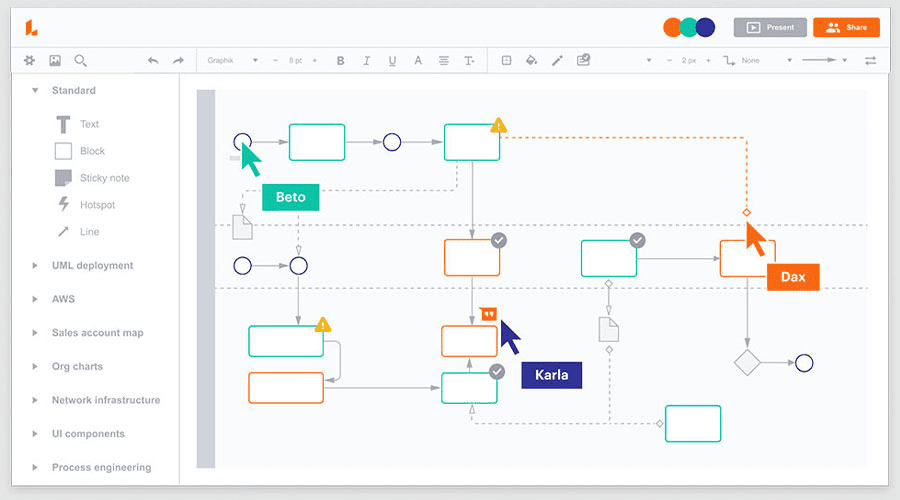
If you are looking for a simple and intuitive platform for creating flowcharts, diagrams, and other visual representations of complex information, then Lucidchart is one of the best web-based diagramming & trusted tools at 7.52% market share. As one of the business analysis tools, Lucidchart allows teams to collaborate on projects in real-time, making it ideal for creating and sharing business process maps, organizational charts, and project timelines. With its wide range of templates, shapes, and icons, Lucidchart helps streamline business analysis services and improve productivity by enabling teams to quickly and easily visualize and communicate complex ideas quickly and easily.
Tool 6: Figma
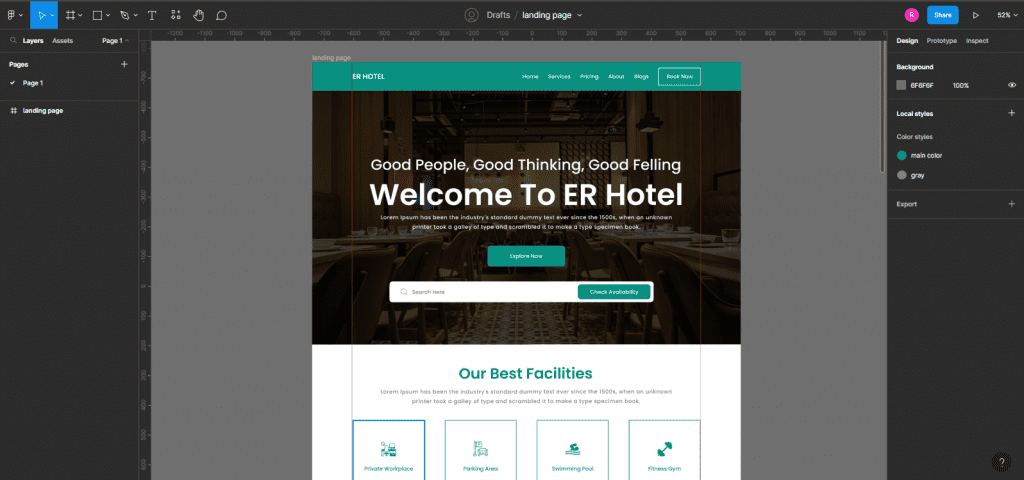
Figma is a web-based design and prototyping tool that enables teams to collaborate on designing and testing user interfaces in real-time. As a popular business analysis tool, Figma captures an 11.28% market dominance & provides a platform for business analysts to create wireframes and prototypes, as well as to gather feedback from stakeholders and users. Its cloud-based design system enables seamless collaboration across teams and locations, making it an ideal choice for companies that hire business analysts to work remotely. With Figma, business analysts can streamline their workflows and enhance their business analysis services by creating interactive and visually appealing designs.
Tool 7: MS Excel
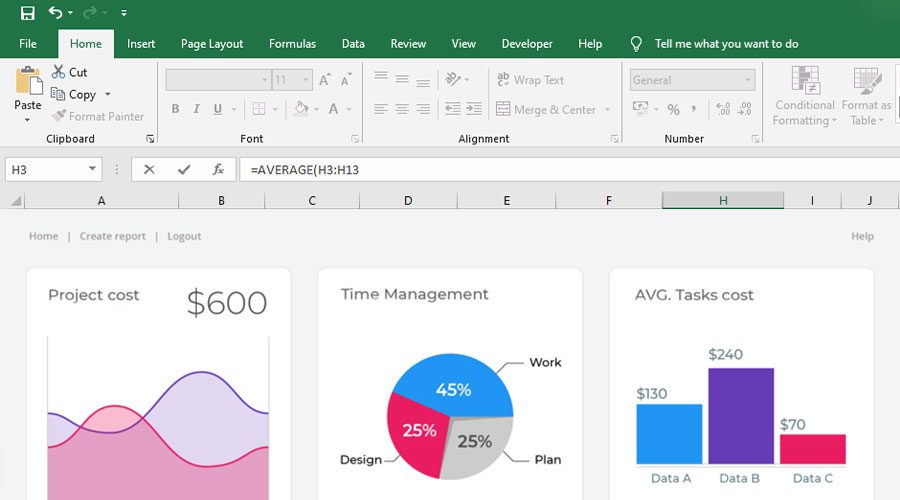
Microsoft Excel is a popular spreadsheet application for business analysts holding a 6.30% sales revenue and used to organize, manipulate, and analyze data. As a key tool in business analysis services, Excel offers a range of features such as pivot tables, charts, and graphs that enable analysts to present data clearly & concisely. It’s flexibility and wide range of functions make it an invaluable asset for any business analyst.
Elevate Your Business Performance with Robust Business Analysis Techniques
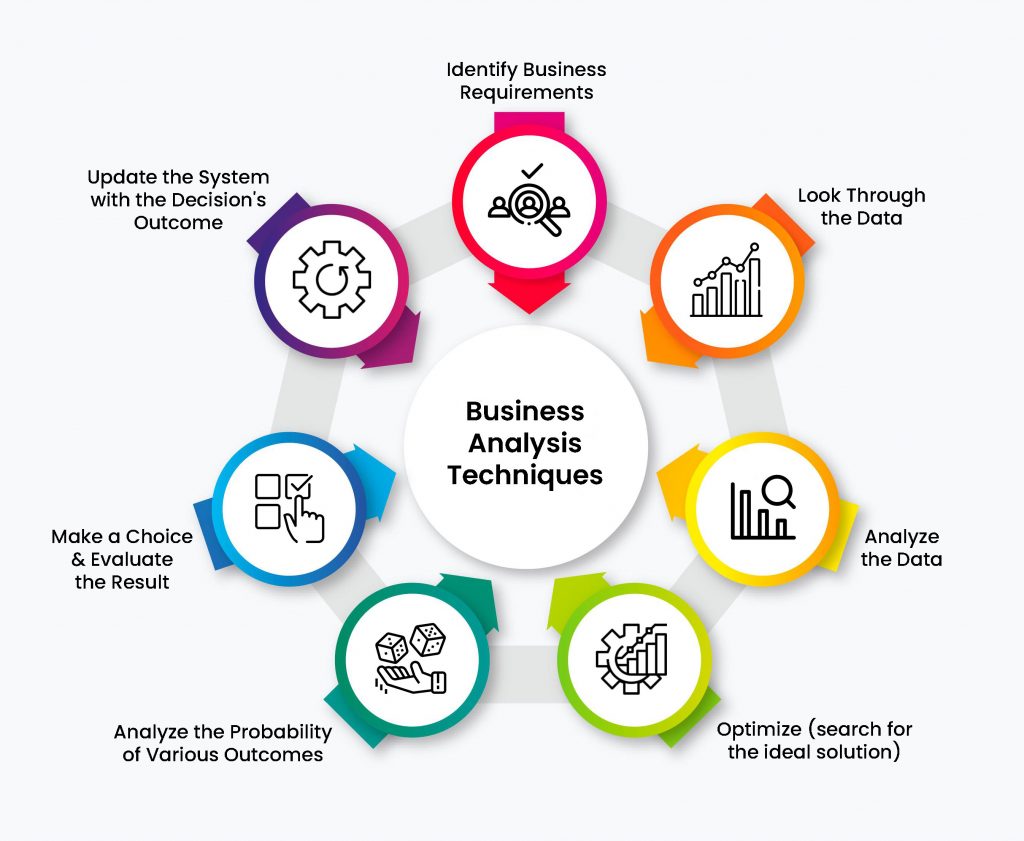
Technique 1: Identify Business Requirements
To kick start the business analytics process, it is crucial first to understand the problems that need solving or areas that require improvement. This often involves breaking down the larger goal into smaller, more manageable goals. To determine the relevant data required to tackle these goals, business stakeholders, domain experts, and business analysts must collaborate to identify the available data, how it can be utilized, and whether the data is sufficient.
You can hire business analyst with years of experience and skill to assist you and ensure this step is successful. These professionals possess the necessary skills & domain knowledge to ask the right questions, identify key data sources, & create a roadmap for achieving the business goals.
Technique 2: Look Through the Data
Data preparation is vital in ensuring accurate insights can be drawn from the data in the business analytics process. This technique involves several crucial steps, including data cleaning, dealing with missing data, & identifying and removing outliers that can skew the results. Removing outliers is particularly important, as they can significantly impact the model’s accuracy & lead to flawed insights. This technique helps to save time and allows business analysts to focus on analyzing the data and drawing valuable insights.
Technique 3: Analyze the Data
In business analytics, statistical analysis techniques identify factors related to the target variable. These include correlation analysis, hypothesis testing, and simple regression analysis to make predictions. The analyst compares different groups using various assumptions tested through hypothesis testing. Moreover, advanced business analysis tools can facilitate this process by automating statistical analyses & streamlining data exploration.
Technique 4: Optimize (search for the ideal solution)
After developing a predictive model, a business analyst will apply its coefficients & outcomes to simulate different scenarios using target values set by managers. The analyst will then choose the most suitable model based on the lowest error, management targets, and their own intuition regarding which model coefficients align best with the organization’s strategic goals.
Technique 5: Analyze the Probability of Various Outcomes
In business analysis services, the goal is to make proactive decisions based on data insights. Analysts use predictive techniques like decision trees, neural networks, & logistic regression to model the data. Also, analysts can uncover valuable insights & identify hidden relationships between variables. After comparing the predictive values with actual values & calculating predictive errors, analysts typically run several predictive models and select the best-performing model based on its accuracy & outcomes.
Technique 6: Make a Choice & Evaluate the Result
The analyst will next decide & take action in accordance with the model’s deduced insights and the organizational goals. After the necessary period of time has passed, the outcome of the activity is assessed.
Technique 7: Update the System with the Decision’s Outcome
Ultimately, the database is updated with the decision & action outcomes as well as any fresh insights gained from the model. Details such as ‘Were the decision & action effective?’ and ‘What was the return on investment?’ are put into the database. The result is a database constantly being updated as new information & insights are discovered.
In conclusion, leveraging business analysis services can significantly boost your business’s performance and growth. At Vasudev Innovative Software, you can hire our top-notch & experienced business analyst to help your businesses make data-driven decisions that align with their strategic goals. With a range of data-related tasks, including financial modeling, forecasting, and budgeting, our business analysis services can help businesses stay ahead of the competition and achieve long-term success. Visit us today & let us assist your businesses to unlock the power of data and maximize their potential in 2023 and beyond.
